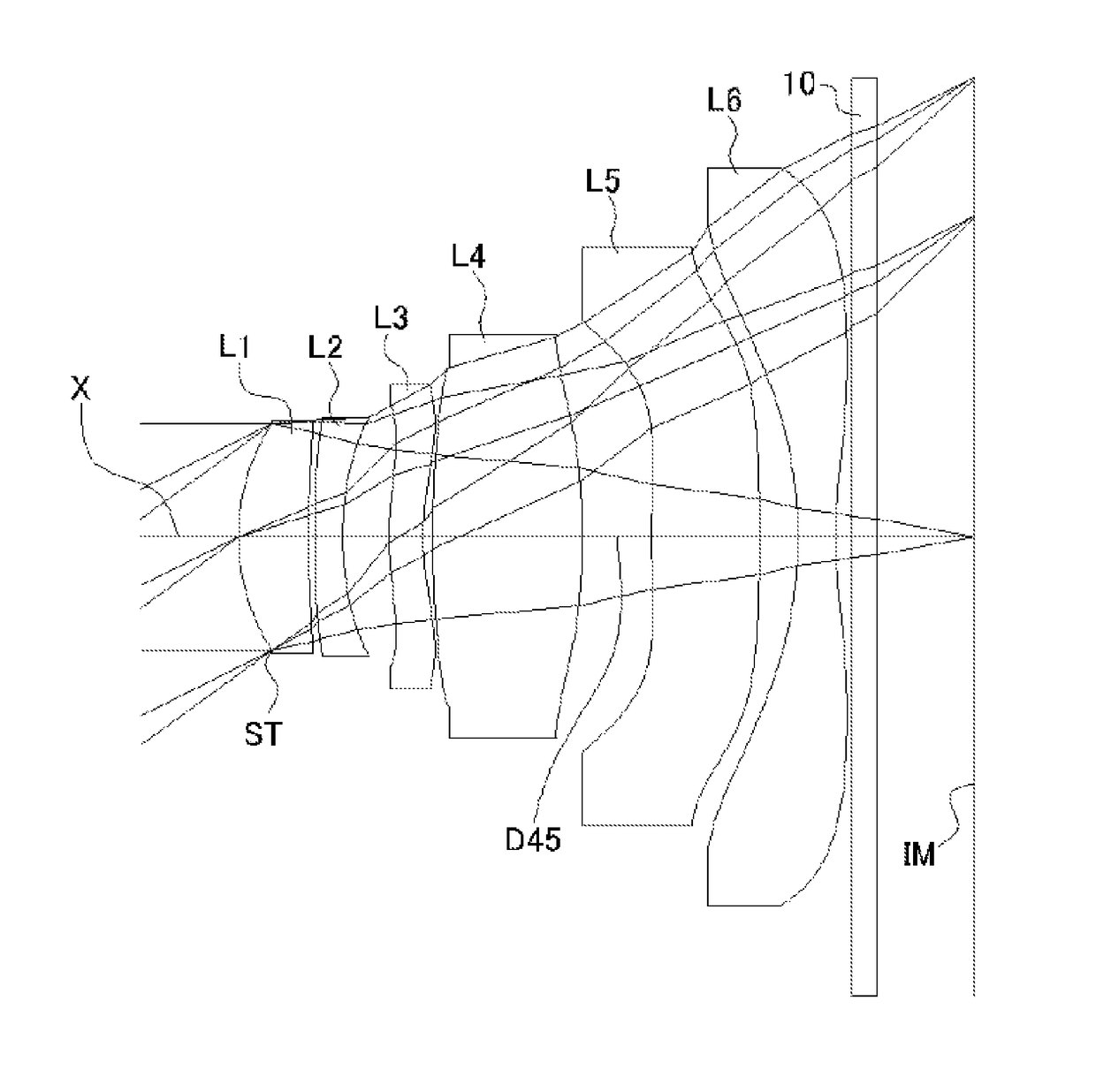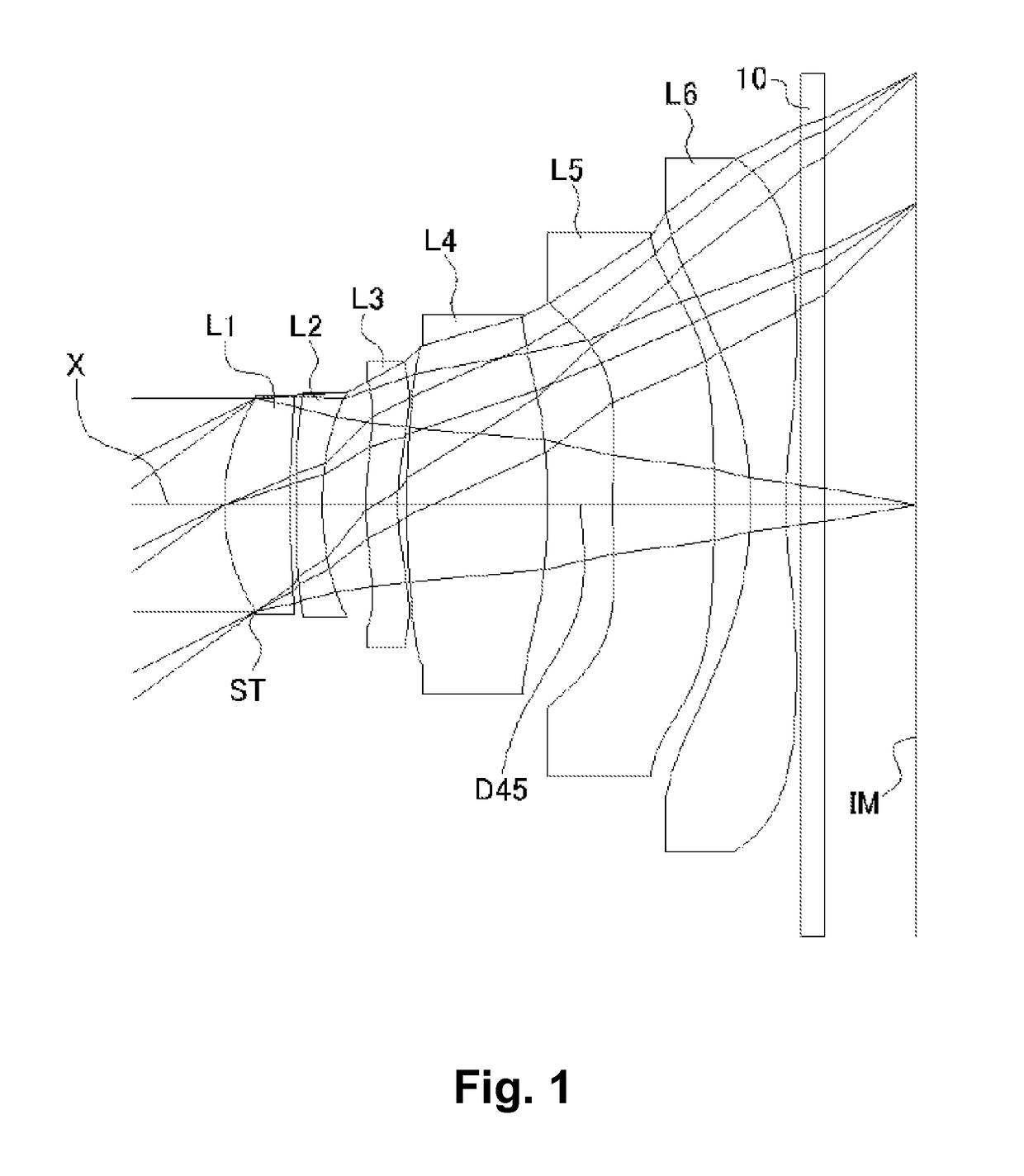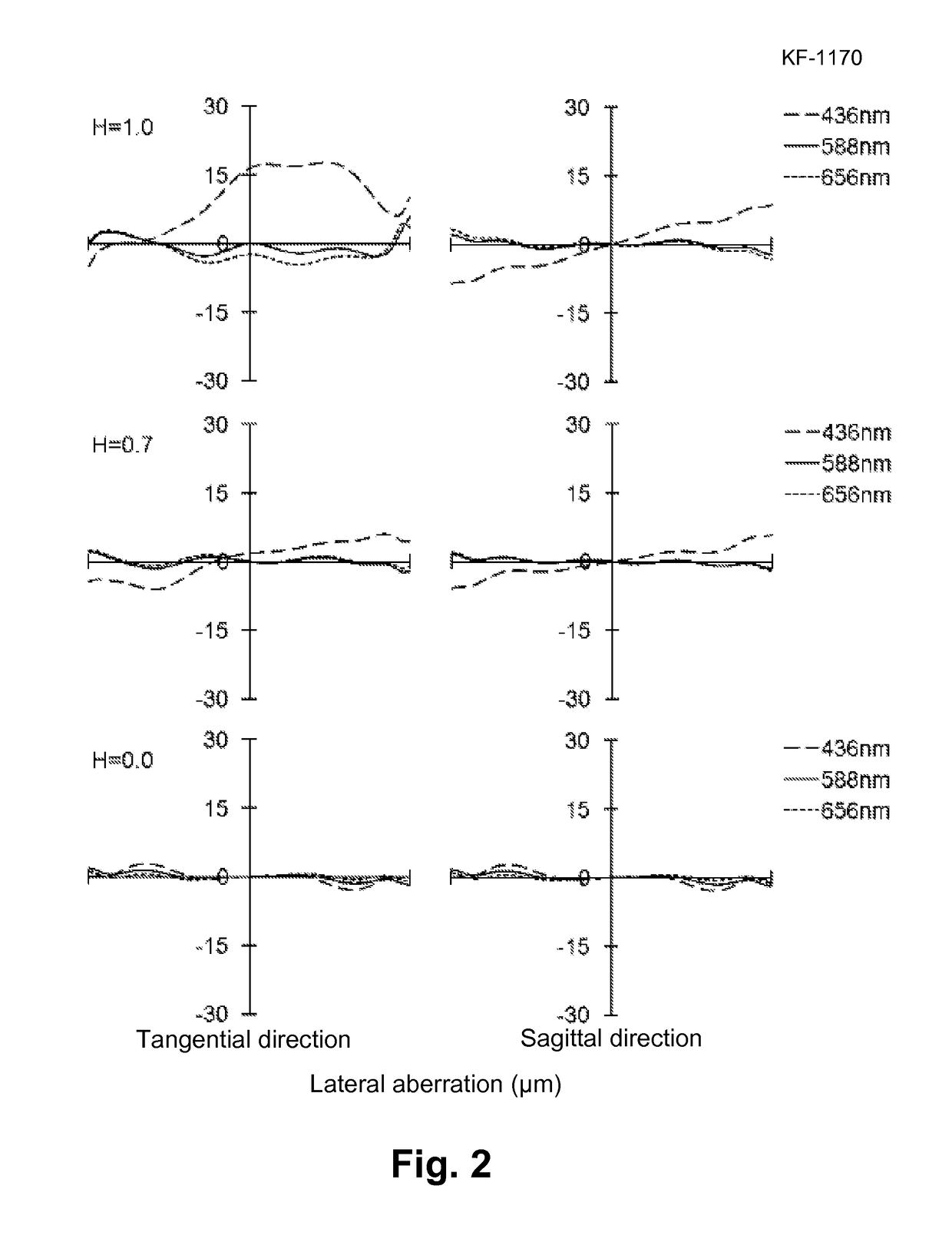Imaging lens
a technology of imaging lens and aperture, applied in the field of imaging lens, can solve the problems of increasing the size of imaging lens, limiting the ability of the lens configuration to achieve satisfactory aberration correction, and a large number of lenses, etc., and achieve the effect of satisfactory aberration correction and high resolution
- Summary
- Abstract
- Description
- Claims
- Application Information
AI Technical Summary
Benefits of technology
Problems solved by technology
Method used
Image
Examples
Embodiment Construction
[0055]Hereunder, referring to the accompanying drawings, an embodiment of the present invention will be fully described.
[0056]FIGS. 1, 4, 7, 10, and 13 are schematic sectional views of the imaging lenses in Numerical Data Examples 1 to 5 according to the embodiment, respectively. Since the imaging lenses in those Numerical Data Examples have the same basic configuration, the lens configuration of the embodiment will be described with reference to the illustrative sectional view of Numerical Data Example 1.
[0057]As shown in FIG. 1, according to the embodiment, the imaging lens includes a first lens L1 having positive refractive power, a second lens L2 having negative refractive power, a third lens L3 having negative refractive power, a fourth lens L4, a fifth lens L5, and a sixth lens L6 having negative refractive power, arranged in the order from an object side to an image plane side. Between the sixth lens L6 and an image plane IM of an imaging element, there is provided a filter 1...
PUM
 Login to View More
Login to View More Abstract
Description
Claims
Application Information
 Login to View More
Login to View More - R&D
- Intellectual Property
- Life Sciences
- Materials
- Tech Scout
- Unparalleled Data Quality
- Higher Quality Content
- 60% Fewer Hallucinations
Browse by: Latest US Patents, China's latest patents, Technical Efficacy Thesaurus, Application Domain, Technology Topic, Popular Technical Reports.
© 2025 PatSnap. All rights reserved.Legal|Privacy policy|Modern Slavery Act Transparency Statement|Sitemap|About US| Contact US: help@patsnap.com



